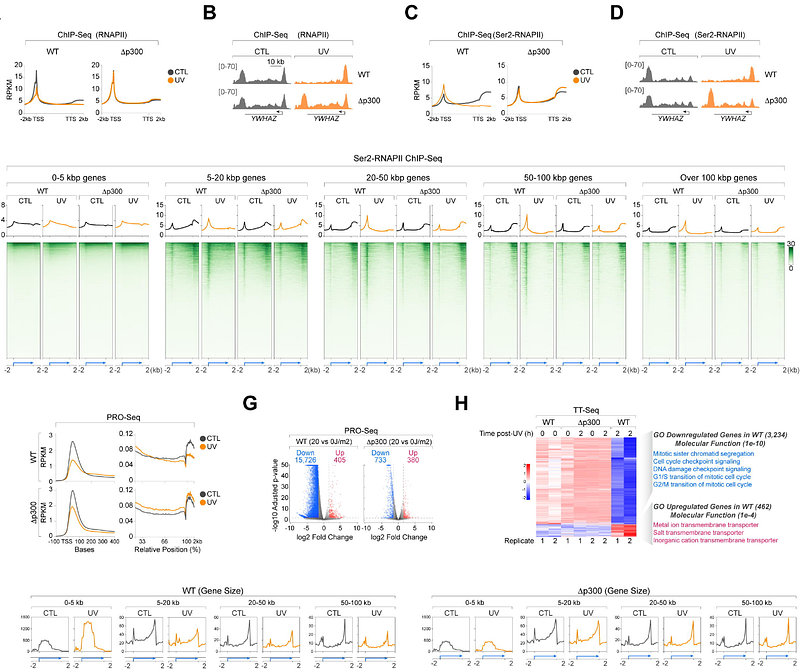Bypass of Blocking Lesions by RNAPII Impairs the Transcriptional DNA Damage Response

Bypass of Blocking Lesions by RNAPII Impairs the Transcriptional DNA Damage Response
Banuelos, C. P.; Caeiro, L. D.; Cingaram, P. R.; Beckedorff, F.; Morey, L.; Cortes, D. B.; Shiekhattar, R.; Verdun, R. E.
AbstractUltraviolet (UV) irradiation and platinum-based drugs generate bulky DNA lesions that impede transcription elongation by RNA Polymerase II (RNAPII). This transcriptional block triggers a coordinated stress response involving transcription-coupled nucleotide excision repair (TC-NER), removal and degradation of the stalled RNAPII, and global transcriptional shutdown. However, the molecular and cellular consequences of RNAPII bypassing such lesions remain unclear. Here, we identify the acetyltransferase p300 as a key regulator of this transcriptional stress response. p300 interacts with stalled RNAPII and promotes its removal and degradation through a USP7-dependent mechanism. Remarkably, in p300-deficient cells, RNAPII bypasses DNA lesions, allowing transcription to persist despite DNA damage and leading to the production of full-length mRNAs. This sustained transcriptional activity without DNA lesion repair results in increased genome instability and reduced cellular proliferation capacity. These findings reveal the biological consequences of transcribing through transcription-blocking lesions.